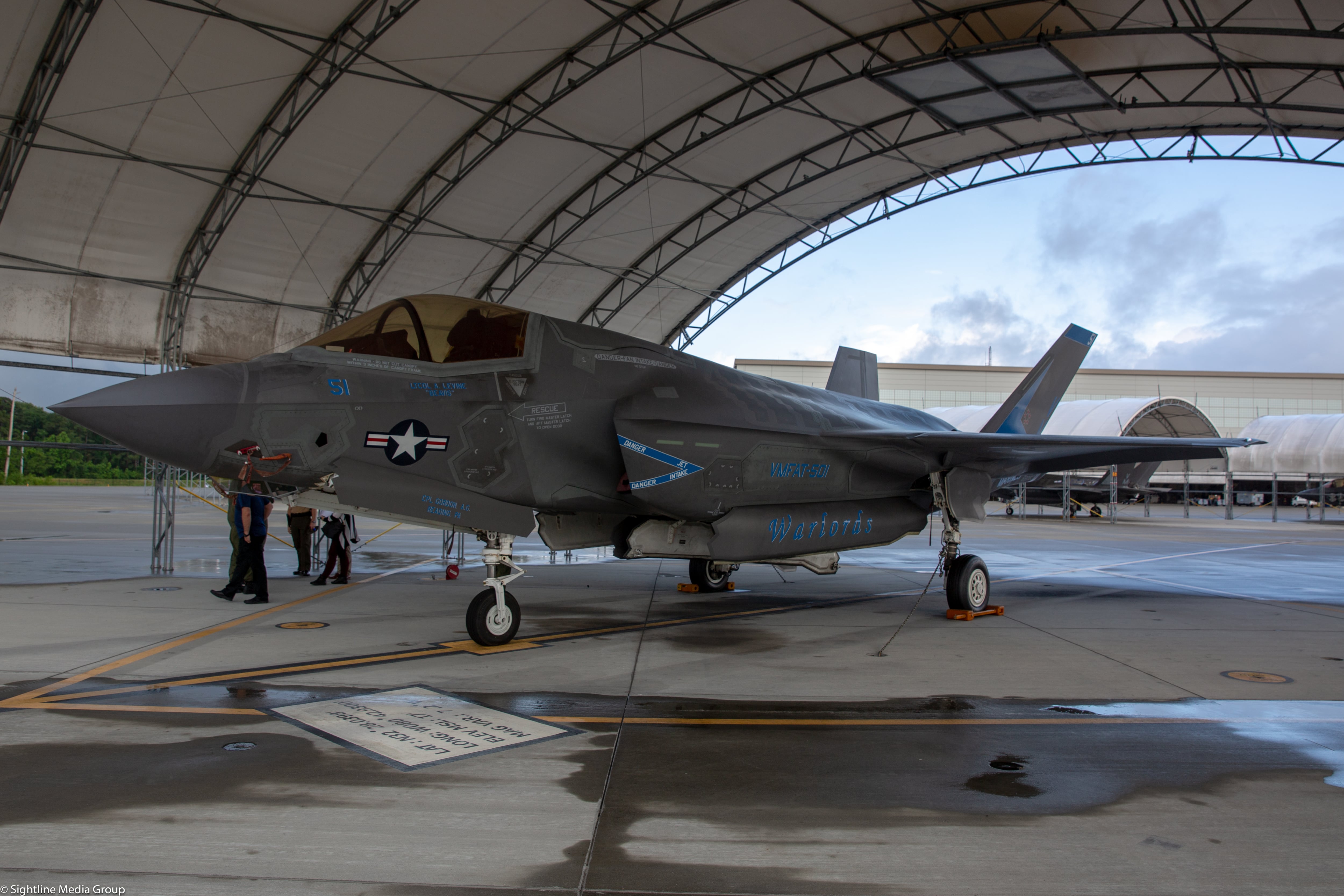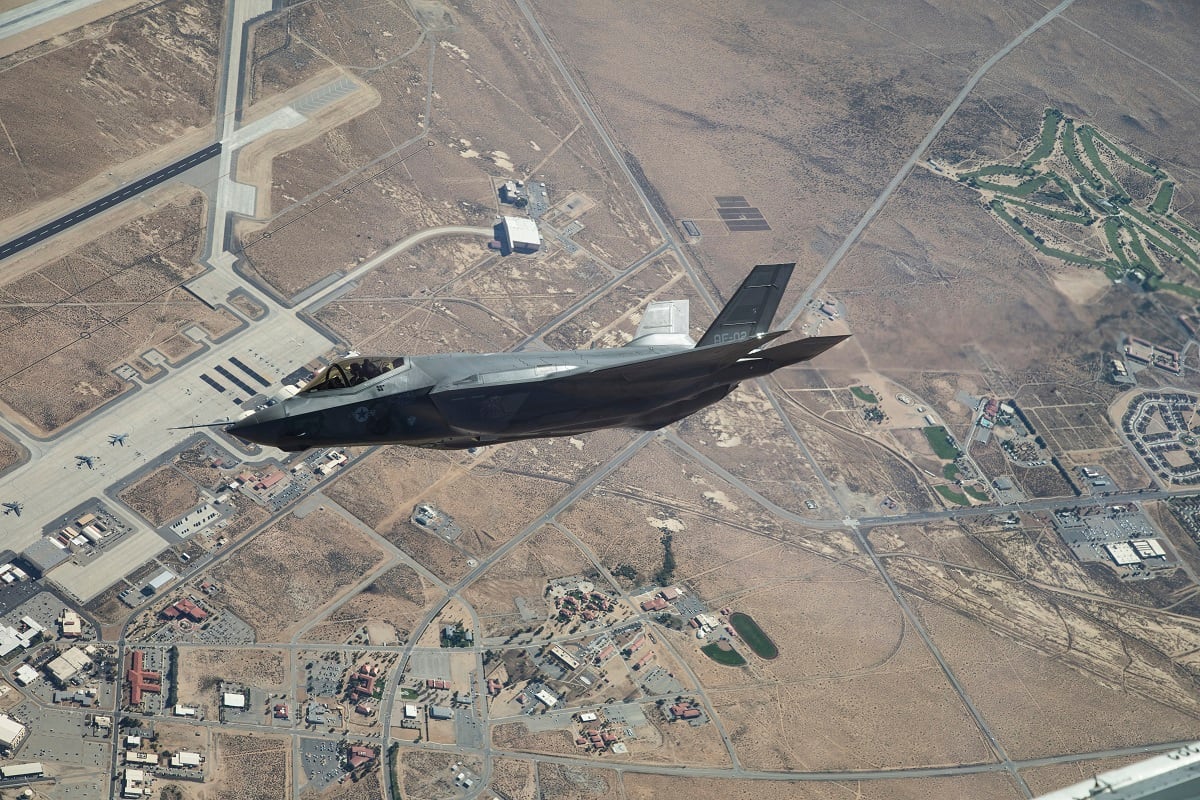WASHINGTON — The F-35 fighter jet is finally cruising toward the end of its development phase, but a congressional watchdog is warning the Defense Department not to move to full-rate production until it’s certain it’s resolved all critical technical issues.
The F-35 Joint Program Office intends to make a decision in October 2019 on whether to move to full-rate production, but had planned to defer certain critical technical deficiencies until after that time, the Government Accountability Office stated in a June 5 report.
That could make the program more expensive overall.
“In its rush to cross the finish line, the program has made some decisions that are likely to affect aircraft performance and reliability and maintainability for years to come. Specifically, the program office plans to resolve a number of critical deficiencies after full-rate production,” it wrote. “Resolving these deficiencies outside of the developmental program may contribute to additional concurrency costs.”
RELATED

The GAO advised the F-35 JPO to resolve all critical deficiencies before full-rate production — a recommendation with which the JPO concurs and says it will pursue.
However, it’s important to understand what “resolve” means in this case.
“The Department of Defense expects the F-35 Program to resolve all critical deficiencies prior to entering Initial Operational Test and Evaluation (IOT&E), with either a fix, a Service Operational Test Agency approved workaround or a formal acceptance of the deficiency,” the JPO said in a statement.
“The full-rate production decision will include an assessment of SDD [development phase] and IOT&E DRs [deficiency reports], as well as follow-on improvement DRs deferred for post-SDD action.”
Translation: While the JPO will take steps to address all critical deficiencies, there are some that may require future work in order to be completely fixed.
GAO noted that it is common practice for Defense Department acquisition programs to require that problems are “resolved” and not “fixed” because it “affords the department with more flexibility to develop alternative solutions rather than technical fixes.”
In a statement, Greg Ulmer, Lockheed Martin’s vice president of the F-35 program, said the company was working with the JPO to prioritize and correct issues.
The F-35’s next stage
The GAO report was also critical about the JPO’s new plan for Block 4 follow-on modernization, telling its congressional audience that it should consider holding back funding for that phase of the program until the JPO provides full details including an independent cost estimate, final acquisition strategy and test plan.
Last year, Vice. Adm. Mat Winter, the F-35’s program executive, announced that the JPO would pursue a path of rapid, agile software modernization during Block 4 called continuous capability development and delivery, or C2D2. The thrust behind C2D2 is for the government to constantly be developing, testing and delivering new capabilities as they become available, instead of as part of a traditional batch of upgrades every couple years.
RELATED

Currently, the cost of the new plan is unknown. The Department of Defense plans to update its acquisition strategy in time for a Defense Acquisition Board meeting this month, when it will decide when to start the competition for Block 4 development.
However, a full business case won’t be finalized until March 2019 — despite the fact that the Pentagon has asked for $278 million in fiscal 2019 for Block 4 development.
“As a result, DOD requested funding for modernization over a year before the program has a business case for Block 4,” the report stated.
“This means that the program is asking Congress to authorize and appropriate funds for Block 4 without insight into its complete cost, schedule, and technical baselines. Furthermore, once Congress appropriates these funds, DOD would be able to award a contract, beginning a long-term commitment to Block 4, the costs of which are not fully understood.”
However, the GAO also acknowledged that there are some elements of that plan that could end up being a boon to the DoD.
For one, it plans to use “government-owned open systems architecture and acquire data rights” for Block 4 development, which could increase competition throughout the F-35’s life cycle and make it easier and cheaper to upgrade the platform.
The C2D2 strategy may also “potentially shorten time frames for delivering capabilities over a traditional acquisition approach,” the agency said in the report.
Most of the noted flaws in the C2D2 plan revolve around oversight — specifically the DoD’s decision to keep Block 4 underneath the F-35 program instead of making it a separate acquisition program.
“According to DOD’s January 2018 report, however, each capability will be baselined separately in the program’s future Block 4 annual reports to Congress,” the GAO noted. “We will review these future reports to Congress to determine what level of insight they provide into the program’s cost, schedule, and performance goals.”
Valerie Insinna is Defense News' air warfare reporter. She previously worked the Navy/congressional beats for Defense Daily, which followed almost three years as a staff writer for National Defense Magazine. Prior to that, she worked as an editorial assistant for the Tokyo Shimbun’s Washington bureau.




